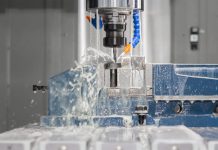LED drivers are functionally equivalent to fluorescent lamp ballasts or low-voltage bulb transformers. They provide the necessary power supply for LEDs to function properly and at a high level. Now that you’ve determined whether your LED light requires an external electronic driver and which type you’ll require, you must determine the specifications you’ll need to consider when purchasing. Here are some things to think about before making a decision.
The lighting industry has evolved quickly and efficiently since the introduction of light-emitting diodes (LED). It has almost completely replaced all lighting sources, including filament bulbs, CFLs, and halogens. From indoor to outdoor lighting, LED is the most practical solution in terms of quality, sustainability, and cost. Do you have any idea how that could happen? The solution is hidden among the countless possibilities offered by electronics drivers. Let us take a quick look at the fundamental definitions of these drivers.
Understanding the Basics of Electronics Drivers
Electronics purchased from the market are typically outfitted with semiconductor chips. These chips perform the function of drivers. Drivers are the components needed to connect a software interface to the hardware. These drivers or circuits are intended to control other circuits or critical components such as stepper motors, LCD displays, and high power transistors. To control the current, smd tvs diodes are used.
LED display drivers, peripheral drivers, IGBT drivers and motor drivers are the biggest demands of current times in the market.
Responsibilities of an Electronics Driver
An electronics driver is designed to perform multiple functions so that the R&D process executes faster and flawlessly. Below is a list of tasks commonly performed by an electronics driver:-
- Regardless of the load, provide adequate voltage
- Should be able to function properly and not cause a short circuit
- Provide sufficient voltage levels
- Enough current levels should be available to source the current
- The current should be able to sink
In the LED industry, electronics drivers are in huge demand because this lighting system is replacing many conventional technologies. While selecting pin electronics for the LED industry, consider the following factors carefully.
-
Power Consumption
While talking about the power consumption aspect, we have to consider three crucial factors i.e. voltage output, voltage input and maximum wattage. First, consider the voltage requirements of your light. If your bulb requires 12 volts to function, use a 12-volt electronic driver; if it requires 24 volts, use a 24-volt pin electronic driver, and so on.
To scale down to the correct output voltage level, our LED driver must take the input voltage of the location where you will be placing your light. Most industrial and commercial businesses use 277 volts, but it’s best to double-check with a professional if you’re unsure.
Choose a driver with a higher maximum wattage than your bulb. Use an electronic driver with a light that consumes less than half of the driver’s maximum wattage or light that consumes more than the driver’s maximum wattage.
-
Power load
The final important factor to consider is your driver’s power. The power factor represents the true power load that the electronic driver places on the electrical system. The power factor has a value between -1 and 1.
-
Dimming
Both constant-voltage and constant-current drivers, as well as LEDs, can be dimmable, but both must make that claim in the product instructions. If the product’s specifications make no mention of dimming, it’s safe to assume it’s not dimmable; the same goes for home LEDs with internal drivers.
-
Efficiency
The efficiency is expressed as a percentage, indicating how much of the driver’s input power can be used to supply current to the LED. Typical efficiencies range from 80 to 85%, with UL Class 1 drivers that can power a greater number of LEDs being more efficient.
Once you understand these technical aspects, establishing a successful LED business would not be difficult. Just make sure that the ATE testing equipment supplier is credible enough in the market.



































